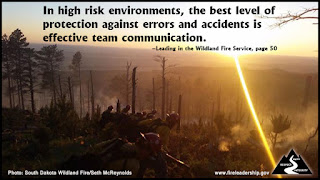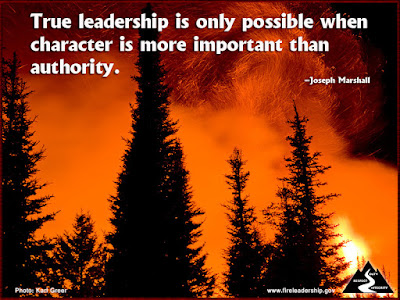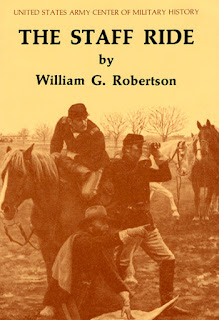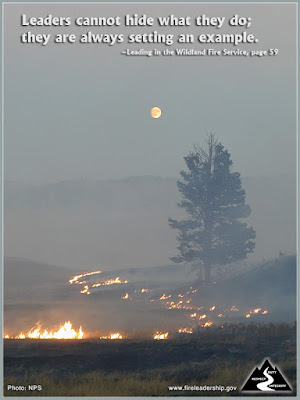Engines 67 and 425 followed the IC to an area near the point of origin at the southwest corner. The IC instructed the engine crews to anchor and split up and directly attack the flanks, using water pumped through their hoses (called “live reels”). Engine 425 worked the southern flank east toward Swan Falls Road while Engine 67 worked the northern flank eastward, also toward Swan Falls Road. Shortly after the flanking operation began, the BLM dozer arrived and was assigned to work the southern flank, constructing a line behind Engine 425 to the east.
A helicopter departed the Boise airport en route to the Point fire at 1857 hours. The helicopter picked up the IC for a reconnaissance flight. During the flight, Unit C arrived on the scene along Swan Falls Road. Engines 61 and 83 were assigned to directly attack the northern flank, west from Swan Falls Road. Engine 09 was sent to directly attack the southern flank west from Swan Falls Road. Telleria, the Unit C leader, assisted the Type 6 Wild West engine with securing Swan Falls Road.
Kuna 620, Kuna 622, and Kuna Tender 625 arrived just behind Unit C at about 1930 hours. IC Kerby assigned the brush trucks to work behind Engines 61 and 83. Doyle McPherson, the Kuna captain (6803), came to the scene in Kuna 620 and was dropped off on Swan Falls Road with Kuna Tender 625 to act as Kuna Command, as directed by Chief Cromwell.
Shortly thereafter, Engine 61 and Engine 83 began flanking the north line, working west from Swan Falls Road. Kuna 620 and Kuna 622 drove around them in tandem and Kuna 620 began working a flare‑up on the fireline, using nozzles attached to the front bumper while driving next to the fire’s edge. Kuna 622 trailed Kuna 620 conserving water.
At 2010 hours, IC Kerby stated that engines on both flanks had met and the spread of the fire had been stopped. He estimated the size of the fire at 120 acres. The dozer continued working the southern edge toward Swan Falls Road.
Red Flag Warning
At 2022 hours, BLM Boise Dispatch issued a “red flag warning” for dry lightning and locally strong winds. At the Point fire, wind gusts of up to 50 miles per hour were predicted from a thunderstorm or cell that was moving northward at approximately 30 miles per hour. Telleria radioed Kerby and requested that he reinforce the fire’s northern perimeter. Upon receiving the red flag warning, IC Kerby positioned Engines 61, 67, and 83 along the northern perimeter in anticipation of the gusty winds.
Kuna 620 and Kuna 622 continued to mop‑up along the perimeter working west along the northern flank, then south, around the west end, turning east. They passed the dozer, Engines 425 and 09, ending up at a fence on the southeast corner of the fire line. At this point, Kuna 622’s crew met with Brian Barney (Wild West Type 6 engine ENOP). Via Barney’s radio, Kuna 622 received directions to refill and continue working the line. Kuna 622 followed by Kuna 620 headed west on the southern perimeter.
The two Kuna engines, still in tandem, turned north and worked along the western perimeter where they ran out of water. Kuna 622 contacted IC Kerby for instructions. Kerby told Kuna 622 to refill and stand by due to predicted high winds. Kuna 620 had momentarily passed Kuna 622 on the northwest perimeter. Kuna 622 pulled alongside of Kuna 620, informing them that they were going to refill. Kuna 622 then took the lead, pulling off the line and turning toward Swan Falls Road. Kuna 622 headed east through the burned‑over area.
Kuna 622, just prior to reaching Swan Falls Road, was contacted by Kuna 620 on radio (BLM tactical Channel 16). Kuna 620’s crew said that the vehicle was overheating. Kuna 622 instructed the crew to remove the screen from the radiator. Kuna 620 acknowledged, “Remove the screen.”
A short time later, Kuna 622 pulled onto Swan Falls Road, turned south, and met with Kuna Tender 625, located south of the southeast corner of the fire where refill operations started. Kuna 620 was not with Kuna 622.
Sometime after Kuna 622 went to refill, Kuna 620 passed Engines 61 and 67 on the west end of the fireline. Soon afterwards, and for unknown reasons, Kuna 620 turned north on a two‑track road at its intersection along the fire’s northern perimeter. (See Map #3, Point A, on SW page 17.) Kuna 620 traveled along the two‑track road for 1,945 feet (Point C) where it turned off the road and drove east and then north‑northeast cross country another 1,786 feet through heavy sagebrush. At this point, the vehicle became disabled (Point E). The vehicle was 713 feet west of Swan Falls Road and 1,750 feet north of the northern fire perimeter.

At about 2046 hours, the fire, fanned by strong, southerly winds from the thunderstorm, escaped from the northern perimeter at several locations. Telleria and Bob Stroud, a BLM fire investigator, were in a Suburban and immediately drove north on Swan Falls Road about 2,000 feet from the original northern perimeter to assess fire behavior. To their surprise and horror, they witnessed a stationary Kuna engine in the path of the oncoming flame front. Telleria repeatedly attempted to radio the Kuna Engine and also Kuna Command on the BLM tactical channel, but received no response. Telleria then radioed Engine 83’s foreman, Lance Lane, a trained medical responder, and advised him that his skills soon may be needed. Telleria also radioed Boise District Dispatch and requested an ambulance and police assistance.
At 2049 hours, Kuna 620 contacted Kuna Command on the Ada County South frequency and reported, “We’re on the north line, Doyle; we got fire coming hard and this thing has died.” The speaker was Bill Buttram, a 31‑year old volunteer fireman with Kuna RFD. The second fireman in the vehicle was 18‑year old Josh Oliver. A minute later, Kuna 620 contacted Kuna Command again on the same channel. “It’s not going to let us out of here!”
Kuna 650 asked Kuna 620, “What kind of problem do you have?” Buttram replied, “We’re surrounded by fire!”
Kuna 650 asked Buttram to repeat. Buttram replied, “The truck’s been overtaken by fire!” This was the last transmission from Kuna 620.
The fire was moving rapidly and burning intensely. Flame lengths were at least 20 feet high, and flame spread was about 560 feet per minute. At the point of escape, the fire overtook Kuna 620 in approximately 4 minutes.
Rescue Attempts
Rescue efforts were hampered by the duration and high intensity of the fire caused by the heavy fuel which consisted of mature sagebrush.
After the flame front passed, several rescue attempts were made by members of Kuna RFD and federal firefighting crews. The residual heat from the sagebrush made the first few attempts to reach the engine impossible. At 2121 hours, Kuna 622 and Engine 425 were able to approach the vehicle. Kuna 620 was still on fire. Kuna 622 extinguished the flames and gained access to the vehicle. Kuna Command was notified that two fatalities had occurred.
Conclusion
Most fatalities that occur on wildfires are not the result of a single mistake or circumstance. Rather, they occur as a chain of unfortunate events. Such is the case in the deaths of Bill Buttram and Josh Oliver. Taken individually, the three primary events that led to the accident were all survivable, and perhaps, not even remarkable. But when the decision to leave the burned area and drive into heavy, unburned fuels was grouped with Kuna 620 stalling and the advent of 40 to 50 mile an hour winds from the thunderstorm, the combination of events proved fatal.
(Map 4 on SW page 18 depicts the fire perimeter and vehicle/crew locations at the time of the Point fire blowup—approximately 2049 hours.)






















